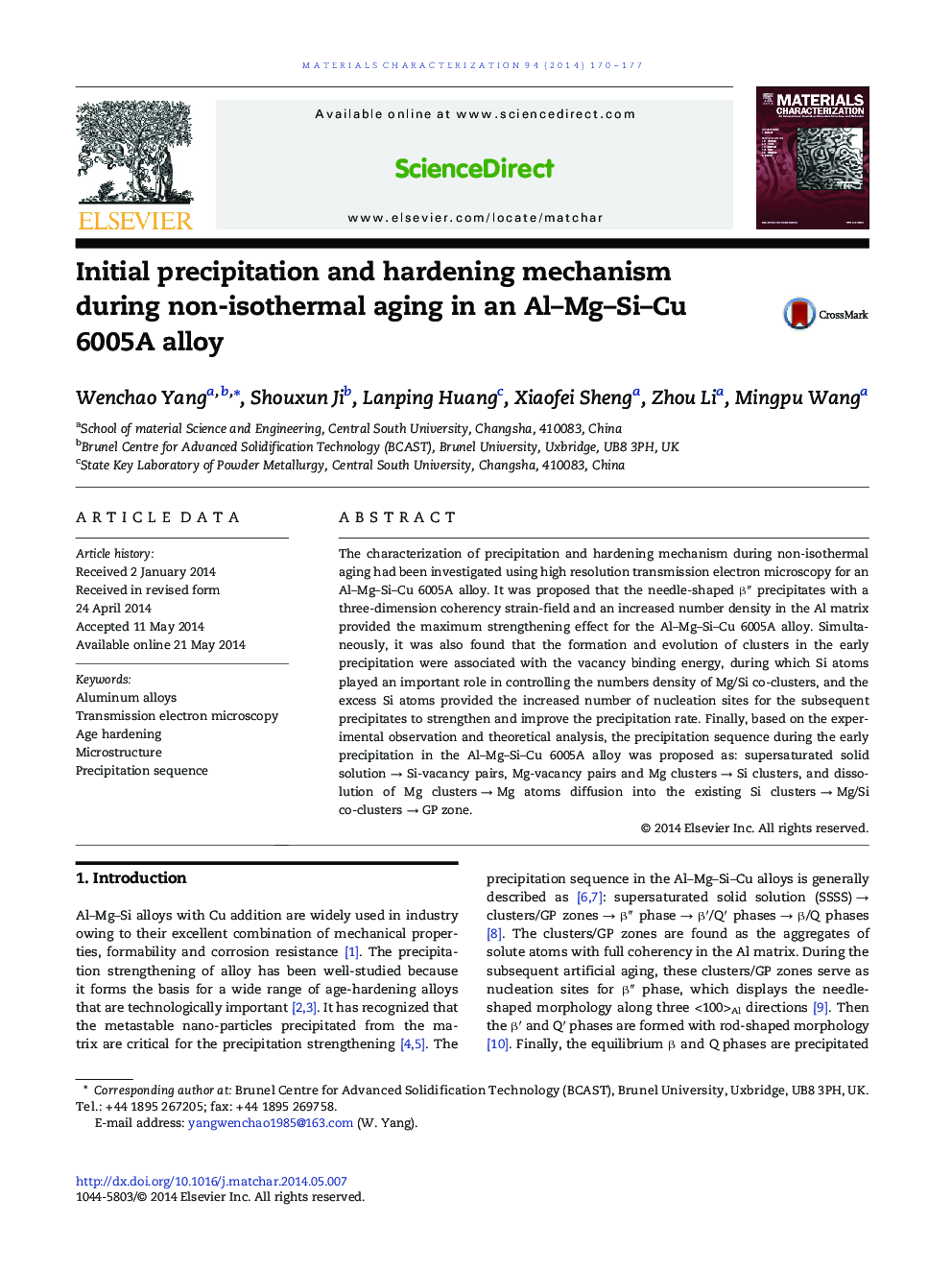| Article ID | Journal | Published Year | Pages | File Type |
|---|---|---|---|---|
| 1570937 | Materials Characterization | 2014 | 8 Pages |
•β″ precipitates provide the maximum strengthening effect for the 6005A alloy.•Si atoms play an important role in controlling the numbers of Mg/Si co-clusters.•The early aging sequence is deduced based on the solute-vacancy binding energy.
The characterization of precipitation and hardening mechanism during non-isothermal aging had been investigated using high resolution transmission electron microscopy for an Al–Mg–Si–Cu 6005A alloy. It was proposed that the needle-shaped β″ precipitates with a three-dimension coherency strain-field and an increased number density in the Al matrix provided the maximum strengthening effect for the Al–Mg–Si–Cu 6005A alloy. Simultaneously, it was also found that the formation and evolution of clusters in the early precipitation were associated with the vacancy binding energy, during which Si atoms played an important role in controlling the numbers density of Mg/Si co-clusters, and the excess Si atoms provided the increased number of nucleation sites for the subsequent precipitates to strengthen and improve the precipitation rate. Finally, based on the experimental observation and theoretical analysis, the precipitation sequence during the early precipitation in the Al–Mg–Si–Cu 6005A alloy was proposed as: supersaturated solid solution → Si-vacancy pairs, Mg-vacancy pairs and Mg clusters → Si clusters, and dissolution of Mg clusters → Mg atoms diffusion into the existing Si clusters → Mg/Si co-clusters → GP zone.
